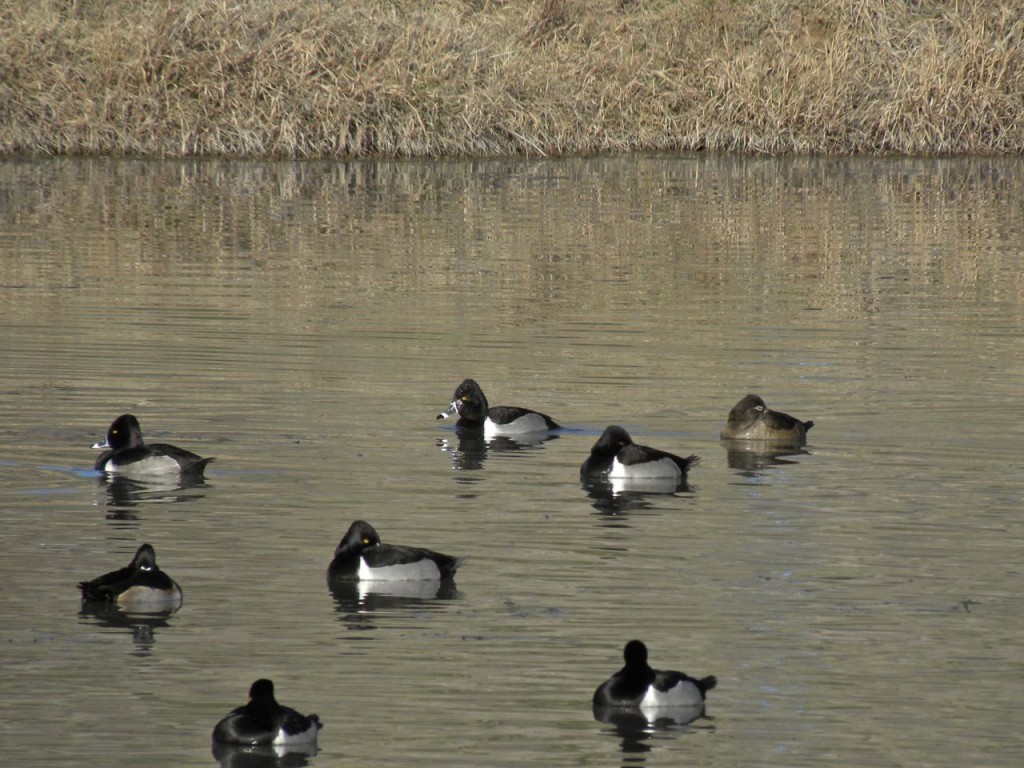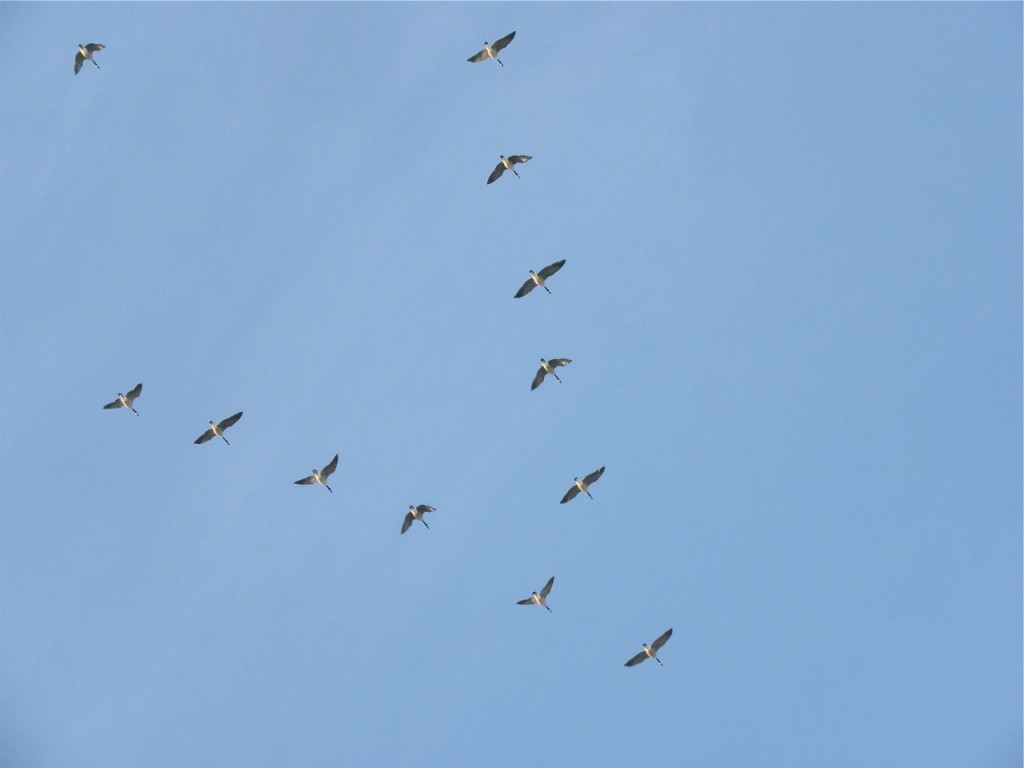March 17 2013. Stoney Creek ON. Before the sun was up and long before anyone else in my household was stirring, I left to drive out to an old flooded quarry that seems to hold special appeal for migrant waterfowl. It was cold, there was a light dusting of snow across the fields and all shallow ponds and puddles were firmly iced over. The quarry too was rimmed with ice but there was plenty of open water in the middle and it was full of birds; Canada Geese mostly, hundreds of them. Milling around with them were Ring-necked Ducks, Mallards, a single Redhead, a few American Widgeon and to add a touch of elegance, a pair of Northern Pintails. Around the edges, as if shunned, were about 30 bulky, necks-tucked-in Tundra Swans.

We don’t see much of Ring-necked Ducks around here. They’re an early migrant, arriving in late February or early March when the first open water is available. They’ll congregate for a month or so on larger ponds but then move north to breed in the near north of Ontario. They look much like a Greater or Lesser Scaup, being of the same genus Aythya, but somehow they are touch more dapper, certainly longer necked, taller and rather conical headed, a lot less like a bathtub-duck. For their handsomeness, and partly because they’re a harbinger of spring, they were today’s Bird of the Day; although I was mightily impressed by the Northern Pintails too.
Later I saw long V skeins of Canada Geese heading my way from far out over Lake Ontario, dozens of them, high and moving quickly. I stopped to get a better look and felt that they must be migratory flocks heading north from more southern wintering grounds. Something about them, perhaps a more purposeful look, marked them as different from the parks and gardens variety that has become such an irritant to we urban humans and our sensitivities.
